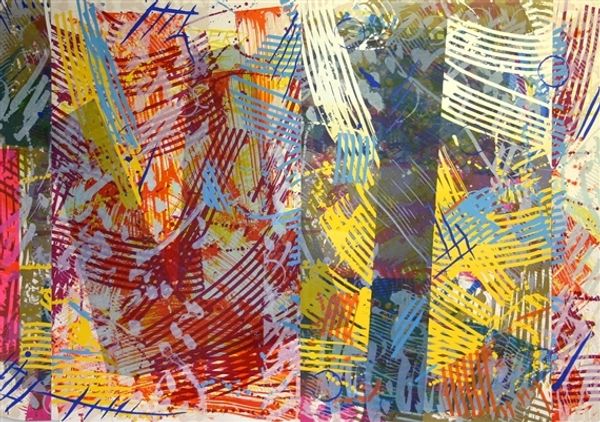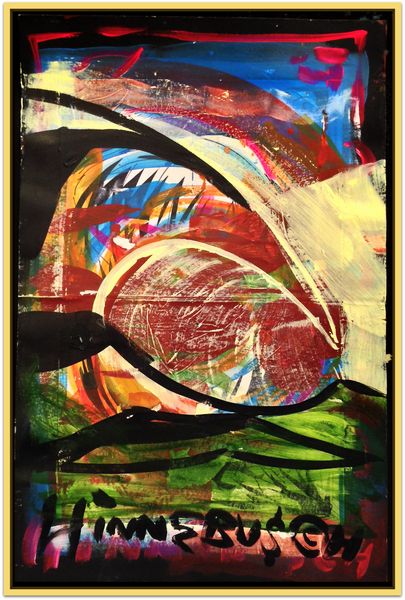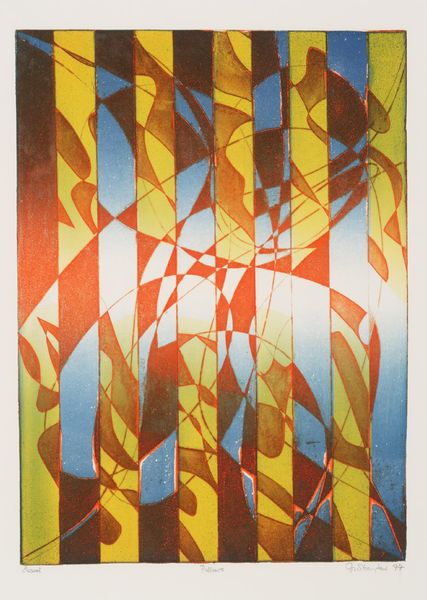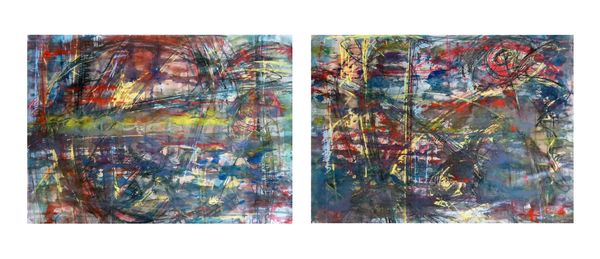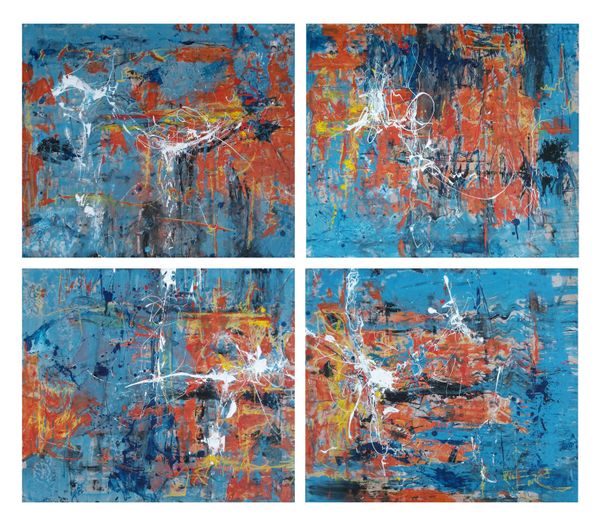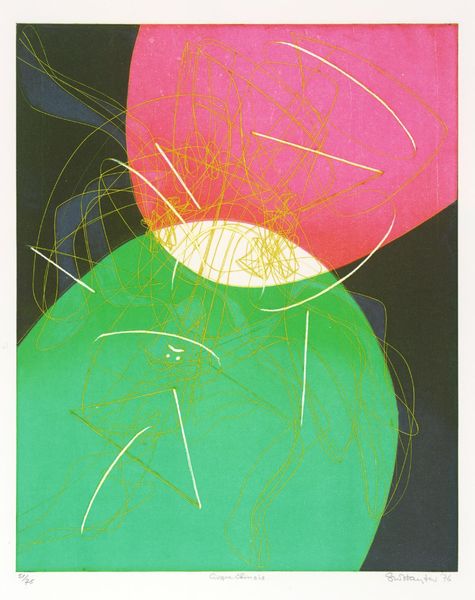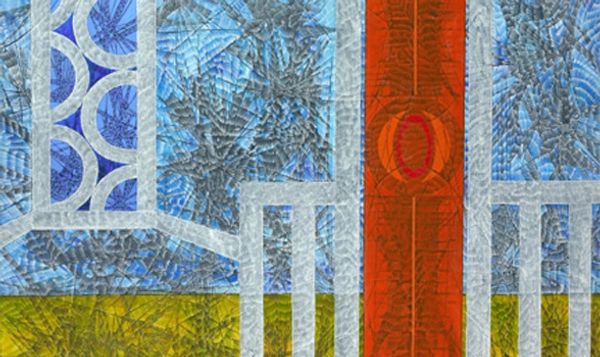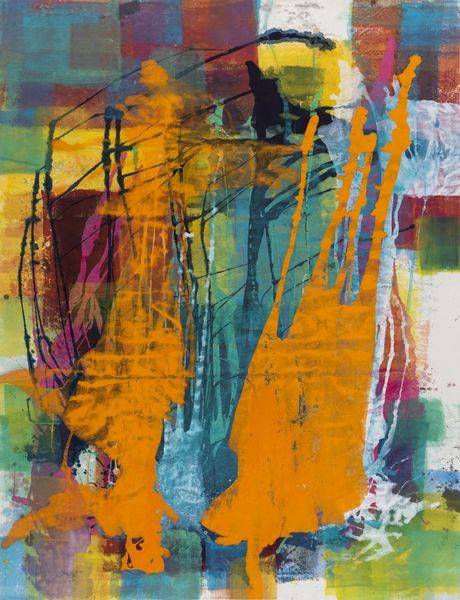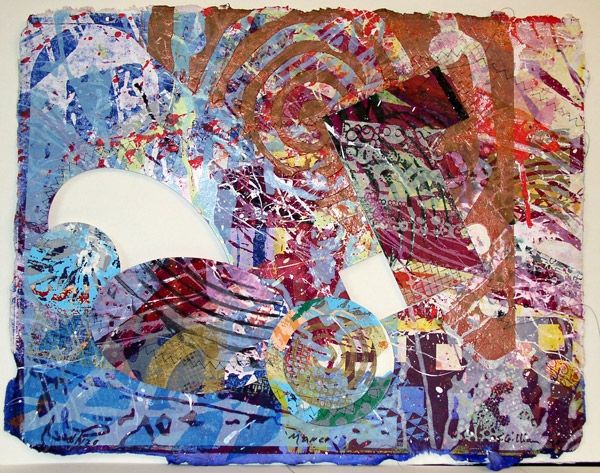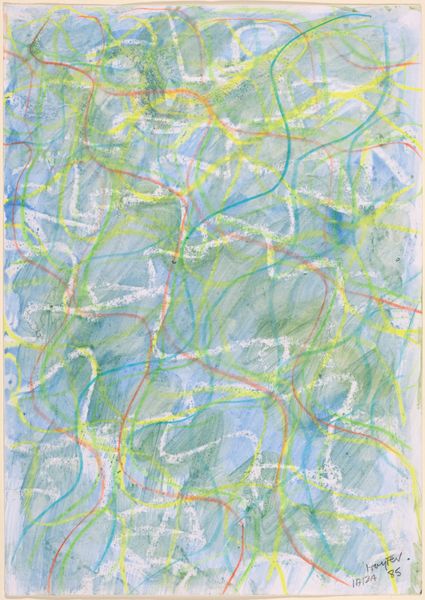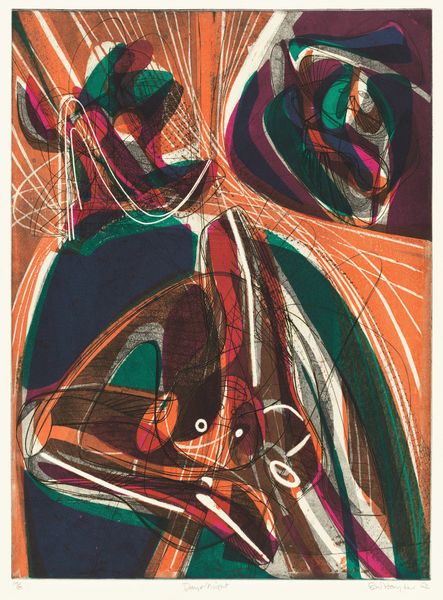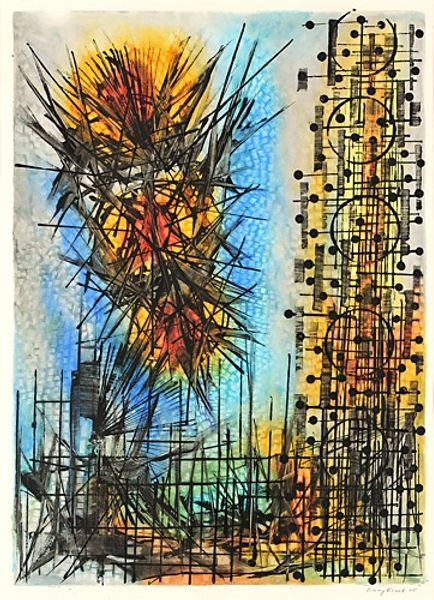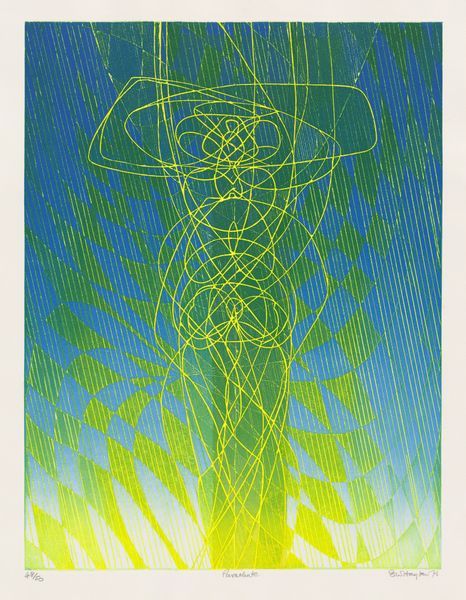
Copyright: Jimmy Ernst,Fair Use
Curator: Looking at Jimmy Ernst’s "Four Days" from 1979, a mixed-media work, my immediate reaction is a sense of fragmented harmony, if that makes sense. Editor: It does. It reminds me a bit of looking at exploded technical drawings – beautiful chaos rendered from disparate materials in the making. Let's delve into the mixed media aspect – how do you see that playing out here? Curator: I see Ernst working through layers—starting with color washes in quadrants, followed by an overlay of linear structures—giving order to disorder. What interests me here is the implication of Ernst’s labor in this almost diagrammatic abstraction. Was this a type of personal processing, an expression of his means in grappling with a specific moment or perhaps it's just pure exploration with tools at hand? Editor: I think your point about order emerging from chaos is spot on. To consider Ernst within his historical moment: abstract expressionism offered artists like him a powerful visual language to engage with existential themes in the aftermath of World War II. And look at those color divisions. Does the quartet offer an implicit statement about compartmentalizing experience in art or life? Curator: Potentially, but I’m more curious about his choice to work serially, as he does with these individual quadrants assembled to make one work. Is the intention a focus on repetitive labor? Is there, then, something he wishes to illustrate about how artmaking—as repetitive physical action—serves to reflect life back to the maker? Editor: I think that the title "Four Days" begs for deeper inspection through that socio-political lens as well. Time is certainly central. The linear web seems to both connect the panels, but also keep them individual – like memories influenced and shaped across time? I wonder if those central orb shapes could even be understood as different views of a single memory object... Curator: A thought-provoking concept—interpreting each panel as stages of remembering. So, where do you come away on what you feel is most revealing after considering all of that context? Editor: It underscores for me the depth possible when abstraction acknowledges history and self. And, you? Curator: It affirms the possibility of material-based investigation as being an embodiment of lived existence—one revealing so much about where materials meet making.
Comments
No comments
Be the first to comment and join the conversation on the ultimate creative platform.
